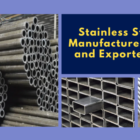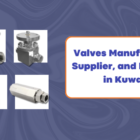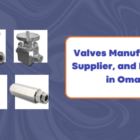What is a Valve Manifold, and Where Do People Use Manifolds Valve?
Manifolds valve are crucial components in fluid control systems, designed to consolidate multiple valves into a single unit. This streamlined setup enhances efficiency, safety, and reliability in various industrial applications.
What is a Manifolds valve?
A Manifolds valve integrates multiple valves into a single body, facilitating fluid control and measurement tasks. This consolidated design reduces space requirements and potential leak points compared to individual valve installations. Manifolds valve are engineered to allow calibration or replacement of instruments without disrupting the entire system, ensuring operational continuity.
How Does a Manifolds valve Work?
Manifolds valve operate by combining valves (typically two or more) into a unified structure. This configuration serves several functions:
- Blocking: Isolating instruments or processes from the main flow.
- Equalizing: Balancing pressure across measurement points.
- Bleeding: Removing fluid from the measurement line.
These functions are essential in industries like oil & gas, petrochemicals, power generation, and water treatment, where precise fluid control is critical.
Where are Manifolds valve Used?
Manifold valves are essential components in various industries, playing a critical role in controlling the flow of fluids, whether liquid or gas. These valves are designed to manage multiple ports or channels from a single block, allowing for efficient regulation and isolation of fluids within a system. Their versatile design makes them suitable for numerous applications, especially in settings where precision, safety, and reliability are paramount. Let’s dive into where and how manifold valves are used, explained in simple terms.
1. Oil and Gas Industry
In the oil and gas sector, manifold valves are indispensable. They are used to manage the flow of crude oil and natural gas from the wells to the processing units. These valves help in directing the flow to different parts of the plant, depending on the processing needs. For instance, manifold valves can isolate a particular section of a pipeline for maintenance without shutting down the entire operation, ensuring continuous productivity.
2. Chemical and Petrochemical Plants
Chemical plants often handle hazardous and corrosive fluids. Manifold valves, made from materials resistant to these harsh chemicals, are used to control the flow within the plant safely. They ensure that the right amount of chemicals is directed to the appropriate processes without cross-contamination, maintaining the integrity of the production process. The valves also provide safety by allowing sections of the plant to be isolated in case of leaks or other emergencies.
3. Power Generation
In power plants, whether nuclear, thermal, or hydroelectric, manifold valves are crucial. They control the flow of steam, water, and other fluids within the plant. For instance, in a thermal power plant, steam generated from boiling water is directed through manifold valves to turbines, where it generates electricity. The precise control offered by these valves ensures that the turbines operate efficiently, leading to optimal power production.
4. Water Treatment Facilities
Water treatment plants use manifold valves to manage the flow of water through various stages of purification. These valves help in directing water from one treatment stage to another, such as from sedimentation to filtration. By doing so, manifold valves ensure that water is treated systematically and effectively before being distributed for public use or industrial purposes.
5. Pharmaceutical Industry
In pharmaceutical manufacturing, where hygiene and precision are critical, manifold valves play a significant role. They control the flow of various ingredients and fluids during the production of medicines. The valves ensure that the correct dosage of each ingredient is mixed and that the flow is directed to the right processing unit. This precision helps in maintaining the quality and consistency of the pharmaceutical products.
6. Food and Beverage Industry
Manifold valves are also used in the food and beverage industry, where they help in controlling the flow of liquids such as milk, juice, and other beverages. These valves ensure that the liquids are mixed, processed, and packaged correctly without contamination. In this industry, manifold valves are often made from food-grade materials to ensure they meet safety standards.
7. HVAC Systems
In heating, ventilation, and air conditioning (HVAC) systems, manifold valves are used to control the flow of refrigerants and other fluids. These valves help in regulating the temperature within buildings by managing the flow of cooling or heating fluids through the system. This ensures that the HVAC system operates efficiently, providing comfort in residential, commercial, and industrial spaces.
8. Automotive Industry
In the automotive sector, manifold valves are used in various applications, such as in fuel systems, braking systems, and engine cooling. They help in controlling the flow of fuel to the engine, ensuring that the engine receives the right amount of fuel for optimal performance. In braking systems, manifold valves help in distributing brake fluid to different wheels, ensuring balanced braking and safety.
Manifold valves are vital components in many industries, each requiring precise control and management of fluid flow. From oil and gas to food and beverages, these valves ensure that fluids are directed, mixed, processed, and isolated as needed, contributing to the efficiency and safety of various operations. Their versatility and reliability make them a key element in industrial and commercial applications, helping to keep systems running smoothly and safely.
Types and Configurations of Manifolds valve
Manifolds valve come in different configurations to suit specific operational needs:
- 2- Manifolds valve: Includes a block valve and a test/bleed valve, ideal for simple shut-off and calibration tasks.
- 3- Manifolds valve: Incorporates two block valves and an equalizer valve, commonly used with differential pressure transmitters to prevent over-range and facilitate calibration.
- 5- Manifolds valve: Features two block valves, one equalizer valve, and additional valves for testing or venting, offering comprehensive control and calibration capabilities.
Body Styles and Mounting Options
Manifolds valve are available in two main body styles:
- Horizontal: Suitable when space is limited horizontally.
- Vertical: Ideal for vertical space constraints or specific layout requirements.
They can also be mounted directly to instruments (direct mounting) or remotely, depending on operational needs and space constraints.
Specifications of Manifold Valves
| Feature | Description |
| Valve Type | 2-Manifolds valve, 3-Manifolds valve, 5-Manifolds valve |
| Applications | Pressure monitoring, differential pressure measurement, flow control, level measurement, temperature regulation |
| Body Styles | Horizontal, Vertical |
| Mounting Options | Direct mounting, Remote mounting |
| Materials | Carbon steel, Stainless steel, Duplex, Super Duplex, Alloy 400, Alloy C-276 |
| Pressure Rating | Up to 420 bar (6,092 psi) |
| Valve Configurations | Block valves, Bleed valves, Equalizer valves, Test valves, Vent valves |
| Operational Features | Bubble-tight shut-off, Non-rotating needle, S-bar valve handles, Metal-to-metal or soft-tip PCTFE/POM valve seat options, Cold rolled stem threads, Blow-out proof needle, Anti-tamper valve head design, Color-coded dust cap |
| Safety Features | Stem threads protected from process media, Gland packing for maximum sealing, Compliance with industry standards (e.g., fugitive emission, sour gas service, oxygen service) |
| Advantages | Reduced leakage, Compact size, Simplified installation and maintenance, Enhanced reliability, Improved operator safety |
This table provides a comprehensive overview of the manifold valve specifications, covering various types, applications, configurations, materials, and operational features. It serves as a quick reference for understanding the capabilities and benefits of manifold valves in industrial fluid control systems.
Manifolds valve attachments
Differential Pressure Gauge configurations, including direct connect and remote connect options, as well as 3 and 5-Manifolds valve options. The table also includes specific product codes and any additional requirements or variations noted.
| Product Code | Description | Connection Type | Additional Requirements |
| 1125 | None | Direct Connect | Requires XA9 variation to attach. |
| 1127 | None | Remote Connect | Requires XA9 variation to attach. |
| 1128 | None | Direct Connect | Requires XA9 variation to attach. |
| 1130 | None | Remote Connect | Requires XA9 variation to attach. |
| 1131 | None | Direct Connect | Requires XA9 variation to attach. |
| 1132 | None | Remote Connect | Requires XA9 variation to attach. |
| 1133 | None | Direct Connect | Requires XA9 variation to attach. |
| 1134 | None | Remote Connect | Requires XA9 variation to attach. |
| F5504 | None | Direct Connect | Requires connection code DM. |
| F5509 | F6509 | Direct Connect | Requires connection code 511. |
| 5503 | None | Direct Connect | Requires connection code 511. |
| D, G, L, P | Differential Pressure Switches | Direct Connect | None |
This table organizes the Ashcroft Differential Pressure Gauge options based on their connection type (Direct or Remote Connect), specifying whether additional requirements or variations are necessary for assembly.
Advantages of Using Manifolds valve
The benefits of Manifolds valve include:
- Reduced Leakage: Fewer joints and connections minimize potential leak points.
- Compact Size: Requires less space and fewer fluid connections, reducing installation complexity and costs.
- Operational Flexibility: Supports various configurations for different applications (instrument, remote-mount, direct-mount).
- Enhanced Safety: Improves operator safety by simplifying operation and maintenance procedures.
Manifolds valve represent a significant advancement in fluid control technology, offering efficient solutions for integrating multiple valves into streamlined systems. Their versatility and reliability make them essential in industries requiring precise fluid management. Whether it’s for pressure monitoring, flow control, or temperature regulation, Manifolds valve continue to be the preferred choice for optimizing fluid control systems worldwide.
Ready to streamline your fluid control systems with Mcneil Instruments a Manufacturer, supplier, and exporters of manifolds valve. Contact us today to explore our solutions and optimize your industrial operations.
Discover more about McNeil Instruments and our range of Manifolds valve solutions. Enhance your industrial operations with our reliable and efficient fluid control systems. Contact us today to find the perfect solution for your needs!






